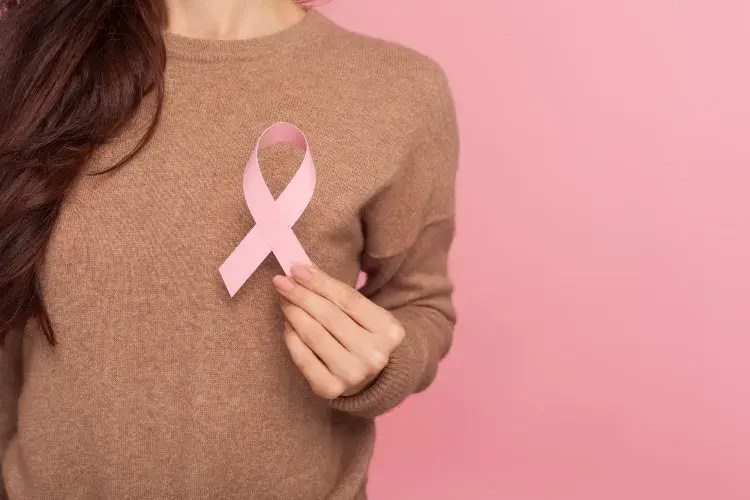Myths arise due to half-knowledge and due to the misinformation available on the internet in abundance. It’s important to consult a doctor before believing in any kind of information, and till the time there is no scientific evidence, it’s essential to not spread the myths. Every year the list of myths grows with the addition of new false information on the internet. So we decided to reach out to Dr. Amodita Ahuja, Consultant Obstetrician, Gynecologist, Laparoscopic Surgeon & Infertility Specialist, to clear all the myths related to breast cancer once and for all.
Myth 1: Breast cancer can only happen in women
Women are more at risk of having breast cancer but this doesn’t mean that men can never have breast cancer. According to the CDC, 1 percent of all breast cancer diagnosed occurs in men. Men also have breasts and anyone with breast cancer can have breast cancer but the incidence is meager if we compare it with women.
Myth 2: Only older women get breast cancer
In the older times, this was the truth. But in the present times, this myth no longer holds true. There is a demographic shift in the age group of women being diagnosed with breast cancer. More and more younger women, especially those in their 20s, are getting diagnosed with breast cancer. The reason behind these demographic changes could be massive lifestyle changes which may include lesser childbearing, late pregnancies, and the chemicals in the food we eat and drink.
Myth 3: Only women with a family history of breast cancer get breast cancer
Breast cancer does run in genes. It’s the BRCA 1 and BRCA 2 genes that are responsible for familial breast cancer. But such cancers account for only 5%. That means if someone in your family had a history of breast cancer you will be at 5% more at risk of developing it as compared to the those who have no history of breast cancer in the family.
Myth 4: Oral contraceptive pills or IVF procedures increase the risk of breast cancer
Earlier, the birth control pills available in the market had high doses of estrogen, i.e. 50 mcg, which definitely had an impact on increasing the risk of breast cancer. Nowadays though, birth control pills contain very low doses of estrogen, i.e. 20 mcg, which does not increase the risk for breast cancer even if taken for more than 10 years continuously. There are no substantial studies that indicate that hormones injected during the IVF procedure can increase the risk of breast cancer.
Myth 5: Sleeping while wearing an underwire bra at night can cause breast cancer
The theory behind this myth was that the underwire in the bra can cause blockage of lymph flow from the breast thereby causing accumulation of the toxins and hence increasing the incidence of breast cancer. But there are no studies that support this hypothesis.
Myth 6: Trauma to the breast like squeezing, nipple piercing, tight bras, or perfumes can cause breast cancer
All these events can definitely cause scar tissue formation and pain in the breast but are not potential factors that increase the risk of breast cancer.
Myth 7: All new lumps or pain in the breast is a sign of breast cancer
80% of the new lumps are benign and not cancerous. But it is important to note that any new lump felt should be evaluated by the doctor to rule out malignancy. Pain in the breast is most commonly caused by hormonal changes in the body or could be due to essential fatty acid deficiency. So don’t freak out with these symptoms, just get it checked by your gynecologist.
Myth 8: Breast cancer will always present itself as a lump
Most breast cancer can be asymptomatic and there are only a few which will present as lump or pain or nipple retractions and discharge or skin changes or retraction of the nipple. That’s why it becomes very important to get yourself screened for breast cancer with a mammogram on a yearly basis especially after the age of 40 years even if there are no risk factors. And if the risk factors are present, then get yearly mammograms after the age of 30 years.
Myth 9: Yearly mammograms can dramatically increase the exposure to x-ray radiation and can increase the risk of breast cancer
On average, every woman is exposed to radiation of 3 MSV per year from their natural surroundings and the exposure from mammograms is 0.4msv. So it is almost equivalent to negligible benefit, and benefits definitely outweigh the risks.
Clear the myths, know the truth, follow what is correct, and spread the right information. Let’s take a pledge to know our breasts better and prevent the spread of wrong information.
Are there any other myths you would like us to bust? Please share it with us in the comments below!
Join the Girl Tribe by MissMalini to be a part of more such conversations. Explore the app!

